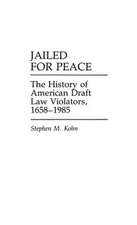Nonlethal Weapons: War without Death
Autor David Morehouseen Limba Engleză Hardback – 8 dec 1996 – vârsta până la 17 ani
Preț: 362.21 lei
Preț vechi: 477.90 lei
-24% Nou
Puncte Express: 543
Preț estimativ în valută:
69.31€ • 75.52$ • 58.40£
69.31€ • 75.52$ • 58.40£
Carte tipărită la comandă
Livrare economică 23 aprilie-07 mai
Preluare comenzi: 021 569.72.76
Specificații
ISBN-13: 9780275951702
ISBN-10: 0275951707
Pagini: 160
Dimensiuni: 156 x 235 x 18 mm
Greutate: 0.36 kg
Ediția:New.
Editura: Bloomsbury Publishing
Colecția Praeger
Locul publicării:New York, United States
ISBN-10: 0275951707
Pagini: 160
Dimensiuni: 156 x 235 x 18 mm
Greutate: 0.36 kg
Ediția:New.
Editura: Bloomsbury Publishing
Colecția Praeger
Locul publicării:New York, United States
Notă biografică
DAVID A. MOREHOUSE is a third generation officer who attained the rank of Major in the U.S. Army before resigning in 1994. He holds a master's degree in Military Art and Science from the Army's Command and General Staff College, and a doctorate in Education from LaSalle University. He writes and lectures on global peace, and is the author of Psychic Warrior (1996).
Cuprins
AcknowledgmentsPrologueChapter OneThe Current PositionAn Historical Model of the Theory: Imperial Japan, 1900-1941An Historical Model of the Theory: The United States in the Cold War Era, 1945-1989An Era of Transition: 1989-1995The VisionEpilogueSelected BibliographyIndex

















